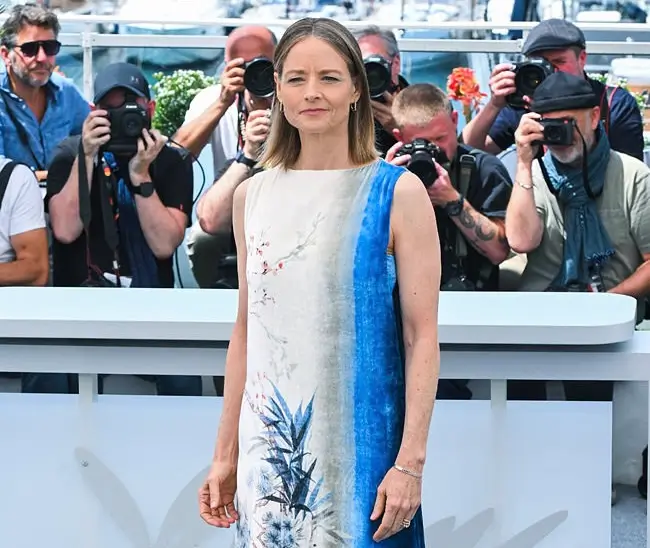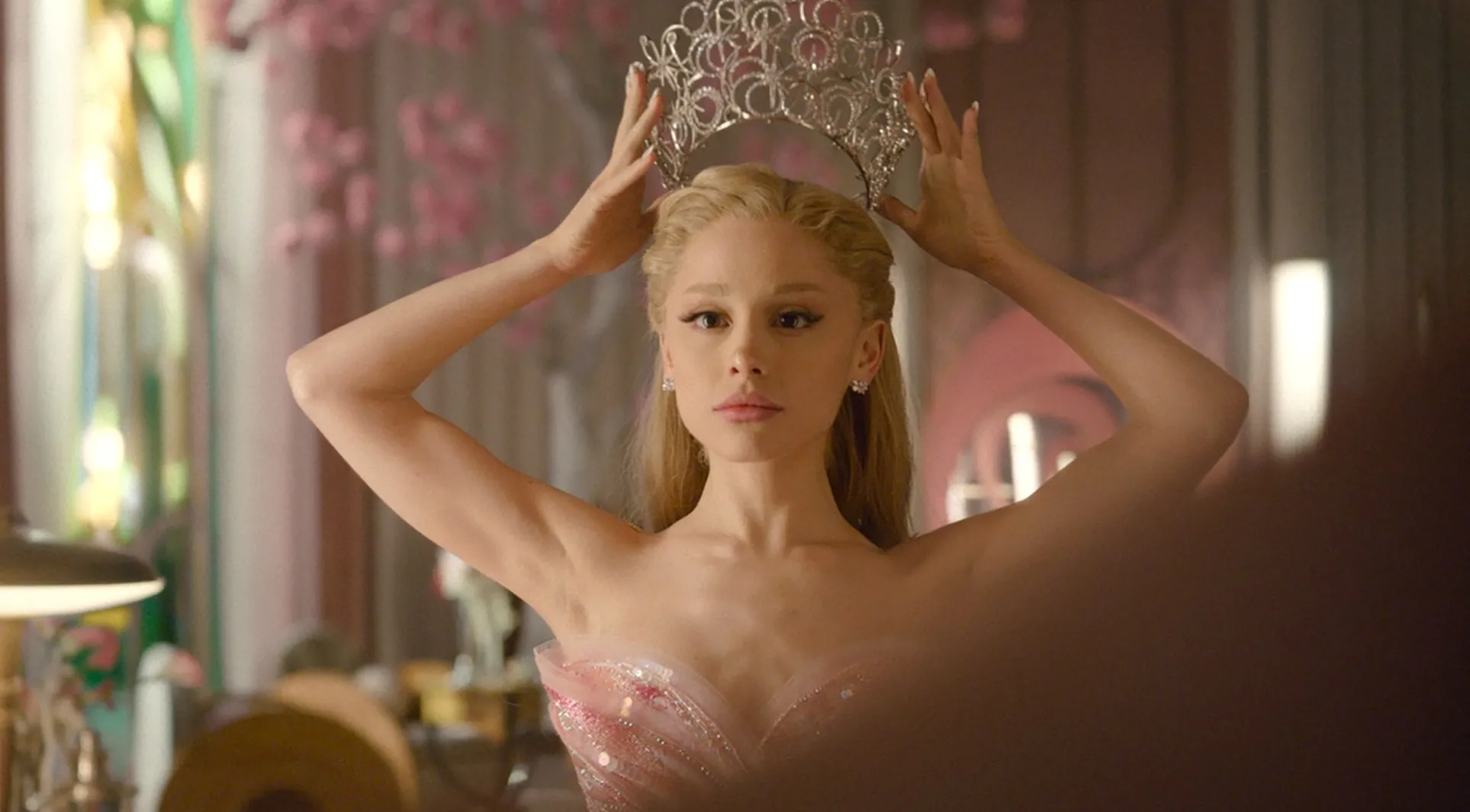Few filmmakers interrogate American culture with as much quiet rigor as Morgan Neville, and few narrators carry as much lived cinematic authority as Jodie Foster. Their pairing in Breakdown: 1975—Neville’s newest documentary, arriving on Netflix next month—isn’t just another nostalgic deep dive into an era frequently mythologized as Hollywood’s artistic apex. It’s a forensic investigation into a single year that produced an almost impossible run of films: Jaws, One Flew Over the Cuckoo’s Nest, Dog Day Afternoon, Nashville, Barry Lyndon, The Passenger, Shampoo, and Night Moves, among many others.
Neville’s film positions 1975 not merely as a cultural turning point but as a moment where filmmaking, politics, generational cynicism, and economic unrest collided with unusual clarity. The results reshaped American storytelling and set into motion the bifurcation of Hollywood into two competing instincts that remain today: the intimate, director-driven character study vs. the spectacle-driven blockbuster. Breakdown: 1975 argues that these were never meant to coexist, but in 1975 they lived side-by-side in a rare equilibrium—one that would soon fracture.
And guiding us through this cultural excavation is Foster: calm, incisive, wry, unhurried, and unmistakably someone shaped by the very forces the film chronicles.
err
Neville’s choice of Jodie Foster isn’t a flourish—it’s structural. Foster was, quite literally, a child of the New Hollywood transition. By 1975 she had already appeared in Alice Doesn’t Live Here Anymore and would soon deliver her era-defining performance in Taxi Driver (1976). Neville deploys her voice with precision: not as the omniscient documentarian narrator, but as a witness who lived inside the cultural turbulence filmmakers were responding to.
Her narration isn’t sentimental. It’s lucid, more essayistic than emotional, as if she is guiding viewers through a crisis timeline—Vietnam fatigue, Watergate distrust, shifting social norms, rising divorce rates, anxiety over crime, accelerating suburbanization, and the first tremors of cable television’s impact on mass culture. What Neville and Foster construct is less a nostalgic retrospective and more a slow-motion reenactment of how culture, politics, and art converged into the industry’s strangest, most generative year.
evolve
Neville has always made documentaries that feel like conversations with culture—20 Feet from Stardom, Won’t You Be My Neighbor?, Roadrunner—but Breakdown: 1975 is the closest he’s come to a pure essay film. There are talking heads (and Neville has assembled a near-unprecedented lineup), but the film moves with the logic of argument rather than recollection.
The structure is guided by themes rather than chronology. Instead of walking through each film of 1975, Neville identifies four cultural drivers that shaped the year:
disillusionment, the mood that followed Watergate;
paranoia, heightened by political assassinations and intelligence scandals;
rebellion, as counterculture ideals fractured into varied artistic expressions;
ambition, the hungry impulse of a generation of filmmakers who sensed a vacuum in Hollywood’s power structure.
Within those four drivers, Neville places the films of 1975 like evidence markers. He doesn’t simply highlight their excellence; he positions them as cultural reactions.
directors who remade the industry
Neville’s roster of interview subjects is the kind of list that normally appears only in festival fantasies or anniversary roundtables that never actually happen. Here they are real: Martin Scorsese, Ellen Burstyn, Francis Ford Coppola, Warren Beatty, Robert De Niro, Richard Gere, Julie Christie, Sidney Lumet’s collaborators, Haskell Wexler’s protégés, and the archivists who have spent decades studying and preserving the films of the mid-’70s.
Instead of using them for isolated anecdotes, Neville pushes these figures into larger conversations. He’ll cut from Scorsese reflecting on the paranoia of Taxi Driver’s origins to Sidney Lumet’s crew explaining how New York’s decaying urban infrastructure shaped Dog Day Afternoon. Then to Pauline Kael’s former colleagues tracing the evolution of critical language around “moral fatigue.” Then to younger filmmakers—Barry Jenkins, Greta Gerwig, Lulu Wang—articulating what 1975 still teaches them about narrative freedom.
The effect is less “star-studded documentary” and more “council of historians assembled to decode an era.”
flow
Neville’s most compelling argument is that 1975 contains Hollywood’s original fracture point. On one side is Jaws, a technical and commercial phenomenon that would give birth to the modern blockbuster. On the other side is the New Hollywood sensibility—ambiguous, character-driven, morally fractured—and the films that embodied it: Nashville, One Flew Over the Cuckoo’s Nest, Barry Lyndon, and Dog Day Afternoon.
Neville doesn’t present this as a binary of “good art vs. commercial art.” Instead, he suggests that 1975 was a moment of duality. The industry didn’t know yet that Spielberg’s thriller would upend decades of distribution and marketing norms. Studio heads didn’t understand they had just stumbled into a repeatable formula. And filmmakers didn’t realize that their window—the era where character studies could be greenlit at scale—was about to contract.
Interviews with industry veterans reveal that most directors at the time assumed Hollywood’s path would remain diverse. No one understood that Jaws was not simply a hit; it was a tectonic event.
Neville’s essay claims that everything about modern Hollywood—its budget structure, franchise obsession, tentpole scheduling, opening-weekend fixation—can be traced back to 1975. And the documentary lets viewers decide whether that timeline feels inevitable or tragic.
the culture
If the interview lineup is impressive, Neville’s cultural analysis is the film’s core achievement. He builds an almost sociological portrait of 1975 America: post-Vietnam disillusionment, Watergate’s aftershock, inflation, the energy crisis, and the collapse of New Deal political consensus.
Through Foster’s narration, the documentary argues that the films of 1975 were not escapist responses but desperate attempts to translate a collapsing social order into new aesthetic languages. Altman responded with sprawling, anti-narrative mosaics like Nashville; Kubrick with icy, painterly detachment in Barry Lyndon; Lumet with hyper-real urban tension in Dog Day Afternoon; Forman with institutional critique in Cuckoo’s Nest.
Neville pairs these readings with archival news reports, political footage, and cultural ephemera. Gas lines, Congressional hearings, New York’s fiscal crisis, crime statistics, self-help movements, the spread of talk radio, and shifting attitudes toward therapy appear less like background noise and more like the atmospheric pressure shaping the films.
The argument is subtle but persuasive: the mid-’70s didn’t simply inspire great movies—they demanded them.
craft
One of the most illuminating aspects of Breakdown: 1975 is its unpacking of craft. Neville gives unusual attention to cinematographers, editors, production designers, and sound engineers—many of whom shaped the signature textures of the era.
The film examines how Gordon Willis, Vilmos Zsigmond, and Néstor Almendros pushed natural light and grain to new extremes; how Dede Allen’s editing in Dog Day Afternoon created rhythms that mirrored public tension; how Walter Murch’s sound design philosophy was shifting industry norms; and how actors like Jack Nicholson, Julie Christie, and Al Pacino embodied characters reflective of a nation losing faith in its institutions.
Neville never romanticizes the craft. Instead, he suggests that these artists were responding to a kind of cultural gravity—that the country’s psychological climate influenced not only stories but textures, tones, and performances.
gen
A particularly compelling section of the documentary involves contemporary directors reflecting on the legacy of 1975. Jordan Peele discusses the year’s fascination with fear and control. Sofia Coppola talks about the emotional interiority of ’70s filmmaking—how characters were allowed to be unresolved. David Fincher highlights the year’s obsession with antiheroes. Chloé Zhao speaks about the freedom of negative space and narrative looseness.
These filmmakers don’t praise the year with blind reverence. Many critique its gender imbalances, its racial blind spots, its narrow storytelling norms. Neville uses these critiques not as disclaimers but as necessary expansions—proof that the best cultural analysis recognizes what a canon includes and what it excludes.
jodie
As the documentary deepens, Foster’s narration evolves. Early on, she operates with journalistic distance. But gradually, she steps closer to the material, reflecting on being a young actor watching adult worlds implode on-screen. She speaks candidly about how filmmaking in the ’70s shaped her worldview: the tension between the intimate and the spectacular, the political and the personal, the brutal and the humane.
Neville uses her voice as a bridge: between past and present, between mythmaking and critique, between the nostalgia that surrounds 1970s cinema and the sober cultural analysis the film insists upon.
By the final act, Foster has become less a narrator than a participant in the film’s argument. She is the connective tissue between decades of cinema and the environment that birthed them.
stic freedom looked like in that rare, volatile moment.
idea
Neville ends Breakdown: 1975 not with a montage of classics but with a sequence of contemporary footage: film students, independent directors, streaming-era experimenters, and new voices breaking away from traditional storytelling structures. Foster’s closing narration resists sentimentality. She emphasizes that every era believes it is living through decline, and every era produces artists who respond to cultural breakdown with clarity and invention.
The documentary doesn’t argue that we will return to 1975. It suggests that the forces shaping the present—technological shifts, political fractures, labor realignments—might create new openings for radical creativity.
Neville’s thesis is both humble and provocative: eras like 1975 aren’t manufactured. They erupt. And they often don’t look like golden ages until decades later.
netflix
Releasing Breakdown: 1975 now—at a moment of industry strikes, streaming disruption, franchise fatigue, and a cultural appetite for renewal—feels deliberate. Neville isn’t drawing a direct line between ’70s Hollywood and the current decade, but he allows the parallel to hang in the air.
The subtext: history doesn’t repeat, but it rhymes in the ways art responds to collective uncertainty.
Netflix’s platform gives the film the global reach needed for a documentary that functions as a cultural essay. It’s positioned not as nostalgia content but as a mirror held up to the present—inviting viewers to consider what kind of cinema might emerge from our own years of fracture.
impression
Morgan Neville’s Breakdown: 1975 succeeds because it refuses to treat 1975 as a museum exhibit. Instead, it treats the year as a pressure point, a collision, a cultural fault line whose aftershocks still shape the movies we watch today. With Jodie Foster’s sharp, lived-in narration guiding the journey, the film becomes a meditation on how chaos, uncertainty, and ambition can converge to create art that endures far beyond its moment.
It’s a documentary built not for nostalgia but comprehension. It asks viewers to understand 1975 not as a lost paradise but as a fragment of history where America’s cultural anxieties demanded a new cinematic language.
And in that language, Neville finds lessons that remain urgently relevant—reminding us that the greatest artistic breakthroughs often arrive not in eras of stability but in years when everything feels on the verge of breaking down.
No comments yet.








